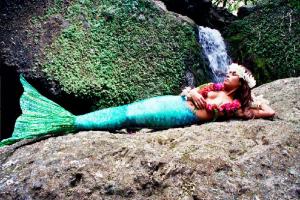Over the weekend I answered a query on Tumblr from a pagan feeling disconnected from nature while living on their college campus. I figured there might be other folks facing the same challenge, whether that’s on a campus, or working every day in an office building, or otherwise unable to get out into more wilderness areas.
I definitely get that it’s tougher to feel connected to the rest of nature when you’re in such a human-dominated space. You won’t get the same effect as, say, hiking out in the middle of nowhere, but there are still ways to stay connected:
–No matter where you are, you still have the cycles of the sun and the moon. Make a study of how the sun’s light hits the ground, buildings, etc. at different times of the day. Take a day where you can get up realllly early and watch the sun rise. Even if you don’t see the actual horizon, you can still watch dawn play out across the sky. And then watch the sun set the same way. With the moon, be mindful each night of what phase it’s in, even if you can’t see it. Should you by chance be near the ocean, pay attention to the tides as well–they’re the most extreme right after full and new moons.
–Clouds? No problem! An overcast sky still shows light, just more subtly. Again, try the “get up early” thing to watch dawn, and then later on dusk, and see how it affects the light through the clouds. If it’s only partly cloudy, spend time study the skyscapes as the clouds shift and change and move across the sky. Learn different cloud types–The Cloud Collector’s Handbook is a fun companion for this.
–I am assuming there are still plants and some smaller animals where you are. Winter is a tough time for viewing critters (especially insects and other invertebrates) but try making a study of the trees and shrubs, if you can, and get to know them by sight. As spring approaches you can watch them wake up from their winter snooze!
–Even if you can’t get to the more wilderness areas right now, try learning about the bioregion, from the geology to the living beings to the climate and more. The exact land where you spend your time may have been changed some by humans, but it’s still beholden to bioregional forces. Here’s a great quiz from my co-blogger, Rua Lupa, that can help you get to know your bioregion better.
–Remember that YOU are nature! You are the human ape, Homo sapiens sapiens. You are a mammal whose body is made of intricate systems that not only keep you, the macrobiological being, going, but also house numerous microbiological systems like bacteria, all of which are necessary for the good of the entire community that is your body. Metaphysically, your bones and flesh are Earth, your cells are soaked in oxygen (Air), each cell has a tiny metabolic furnace in it (Fire) and your body is roughly 60% Water. You ARE the four classical elements at all times.
These are just a few of the ways you can connect to non-human nature no matter where you are. What other ideas do you have, dear readers?















